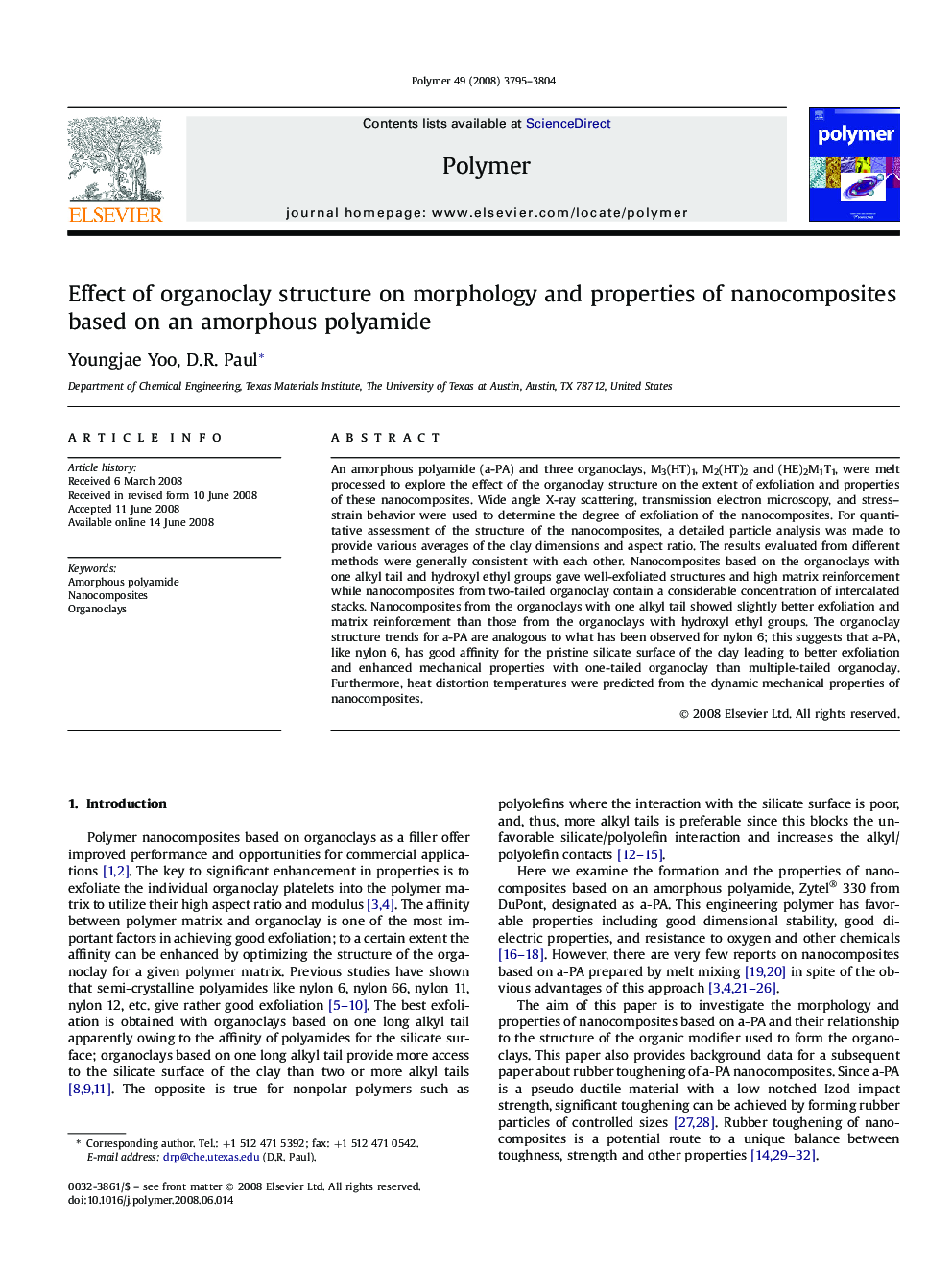| Article ID | Journal | Published Year | Pages | File Type |
|---|---|---|---|---|
| 5187085 | Polymer | 2008 | 10 Pages |
An amorphous polyamide (a-PA) and three organoclays, M3(HT)1, M2(HT)2 and (HE)2M1T1, were melt processed to explore the effect of the organoclay structure on the extent of exfoliation and properties of these nanocomposites. Wide angle X-ray scattering, transmission electron microscopy, and stress-strain behavior were used to determine the degree of exfoliation of the nanocomposites. For quantitative assessment of the structure of the nanocomposites, a detailed particle analysis was made to provide various averages of the clay dimensions and aspect ratio. The results evaluated from different methods were generally consistent with each other. Nanocomposites based on the organoclays with one alkyl tail and hydroxyl ethyl groups gave well-exfoliated structures and high matrix reinforcement while nanocomposites from two-tailed organoclay contain a considerable concentration of intercalated stacks. Nanocomposites from the organoclays with one alkyl tail showed slightly better exfoliation and matrix reinforcement than those from the organoclays with hydroxyl ethyl groups. The organoclay structure trends for a-PA are analogous to what has been observed for nylon 6; this suggests that a-PA, like nylon 6, has good affinity for the pristine silicate surface of the clay leading to better exfoliation and enhanced mechanical properties with one-tailed organoclay than multiple-tailed organoclay. Furthermore, heat distortion temperatures were predicted from the dynamic mechanical properties of nanocomposites.
Graphical abstractDownload full-size image
